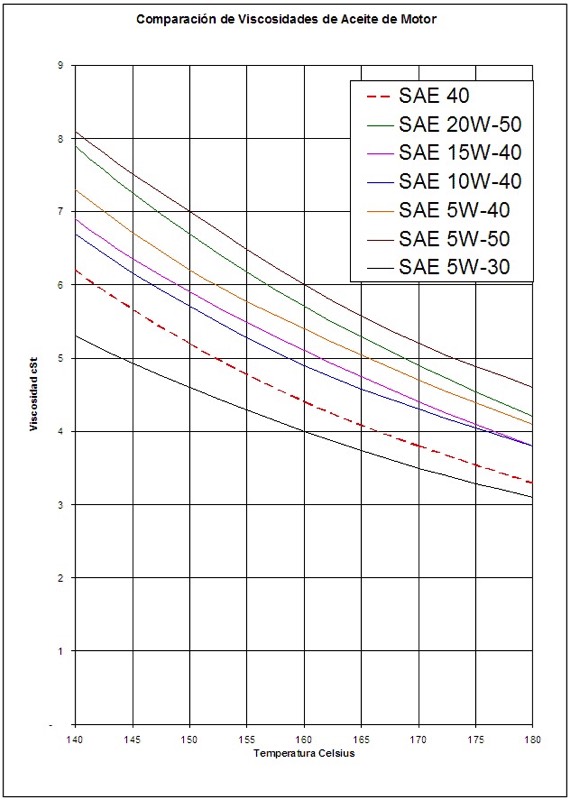Viscosity comparison between different motor oils at different temperatures
Welcome to the SKALN Customer Portal, where our customers can view and download useful information such as MSDS's. If you would like to open an account, please contact us.
Viscosity comparison between different motor oils at different temperatures
A SAE 40 oil is more viscous (resists flow more) than the rest and ends up with less viscosity in the hotter areas of the engine like the rings, bearings, turbos, valve guides and valve train.
The 5W-40 Synthetic starts with a lot less viscosity and maintains it better in the hotter parts of the engine.
To calculate the graphs of any four specific oils with their spec sheets and our graphic conversion tool, click here. (note, this tool uses Flash which may not work on some devices.)
This graph is for typical products in the market
To see more detail in a given temperature range, click the range you want.
Between 0°C and 30°CBetween 0°C and 30°C a SAE 40 is thicker and harder to pump than the rest of the oils. The engine will run dry for various seconds until the oil is able to circulate. You can see that even a 10W-40 is too thick for most engines when started.
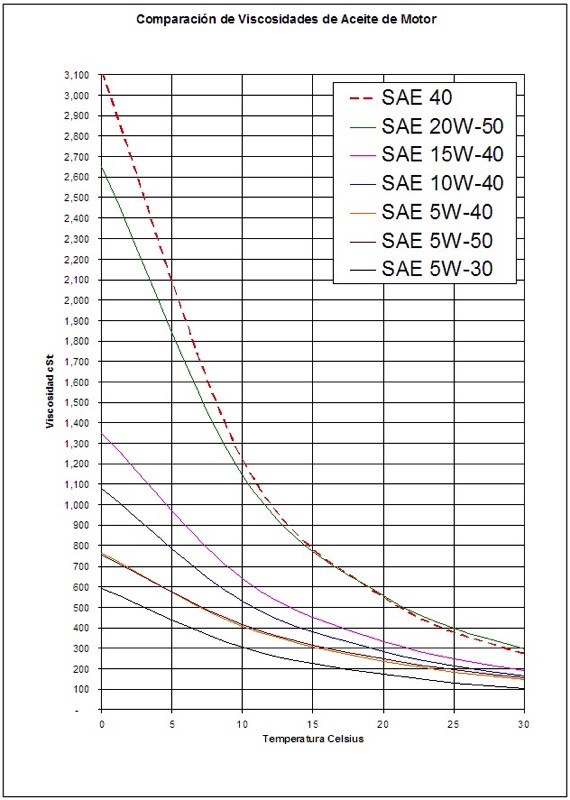
Between 20°C and 60°CWhile the engine is warming up, the viscosity drops towards its ideal level. You shouldn’t force the engine or run at high revolutions until it gets below 20 cSt.
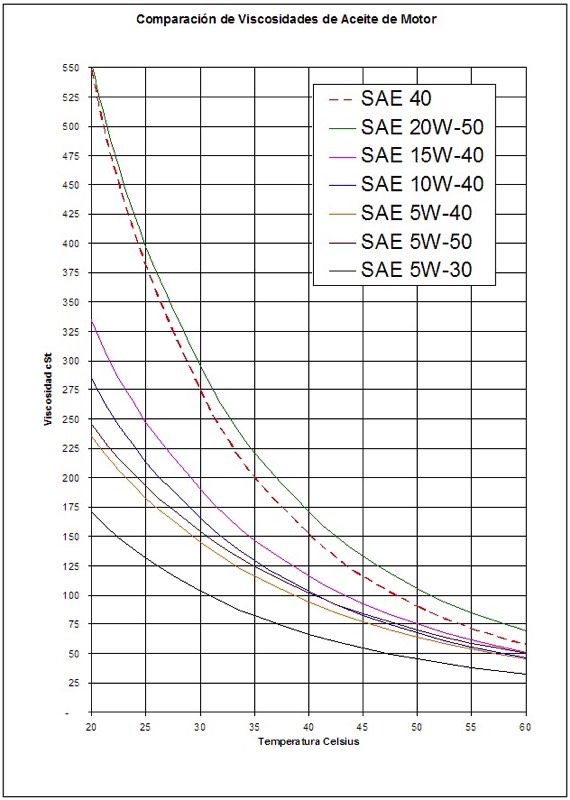
Between 40°C and 80°CIn this temperature range the curves of different viscosities begin to cross, showing better protection with the higher viscosity index of the better multigrade oils. Around 80ºC the thermostat opens and starts to control the water temperature between 80°C y 100°C.
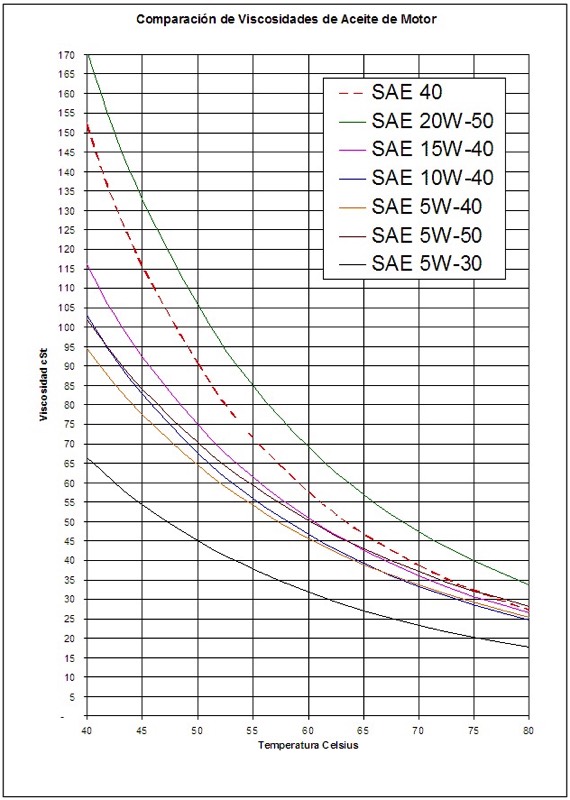
Between 60°C and 100°CNote that from about 73 degrees, the SAE 40 offers less viscosity than various other oils.

Between 80°C and 120°CHere we can see that above 102°C the SAE 40 has a lower viscosity than any except SAE 5W-30. Since the operating temperature of the engine is between 80°C y 100°C we should consider the proper viscosity for our engine according to the owners manual.

Between 80°C and 180°CThis is the work zone of different engine components, including the turbo that operates up around 180°C.
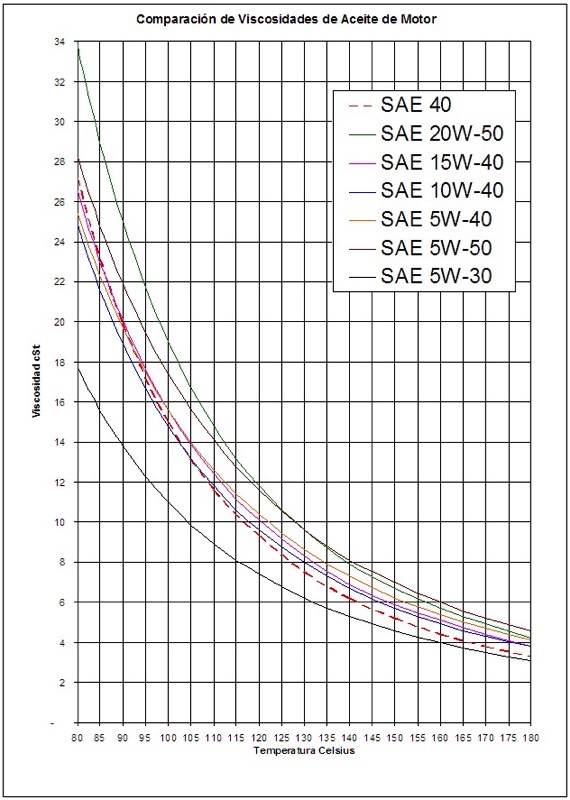
Between 140 and 180°CThis is the zone where various engine parts operate, including the rings and turbo. While the SAE 40 gets close to the 5W-30 in viscosity, the 5W-30 begins to be thicker and offer more film protection.
